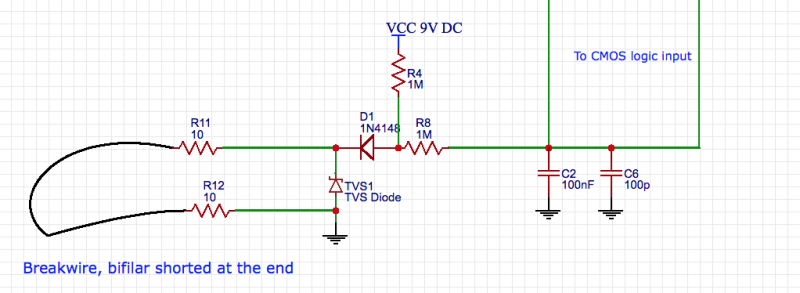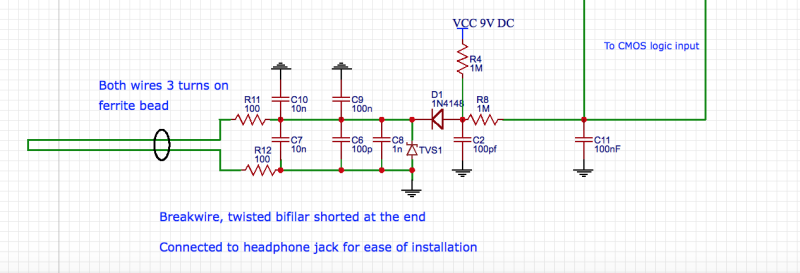The following circuit is an input section of a break wire alarm. The sensor is a 20m long wire which activates the alarm when broken. The wire keeps the logic input low and when it's open the logic input goes high. The first priority in designing this circuit was robustness against false alarm due to RFI induced noise and low power consumption as it's powered by a 9V battery. Although the protection seems to be enough I'd like your input. Additionally, other suggestions regarding the design of PCB will be welcomed.



